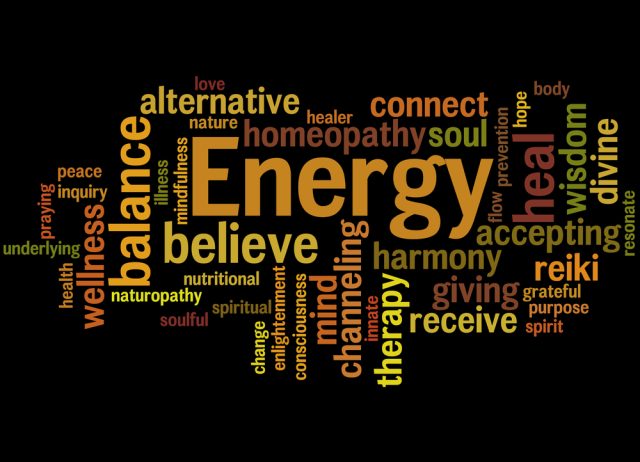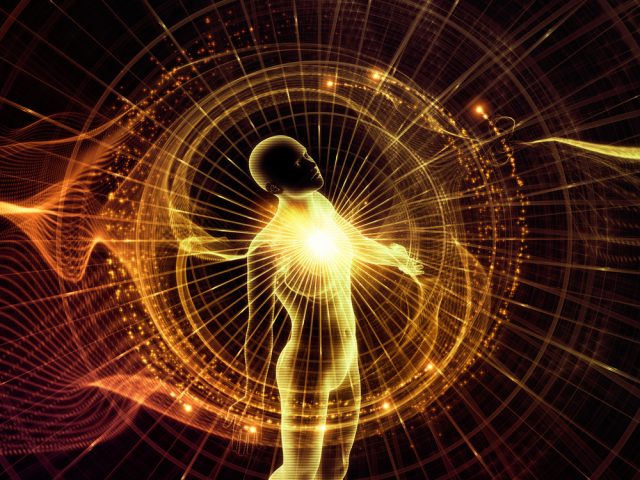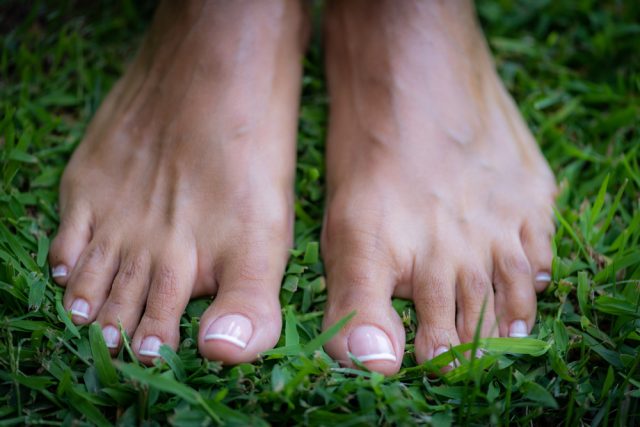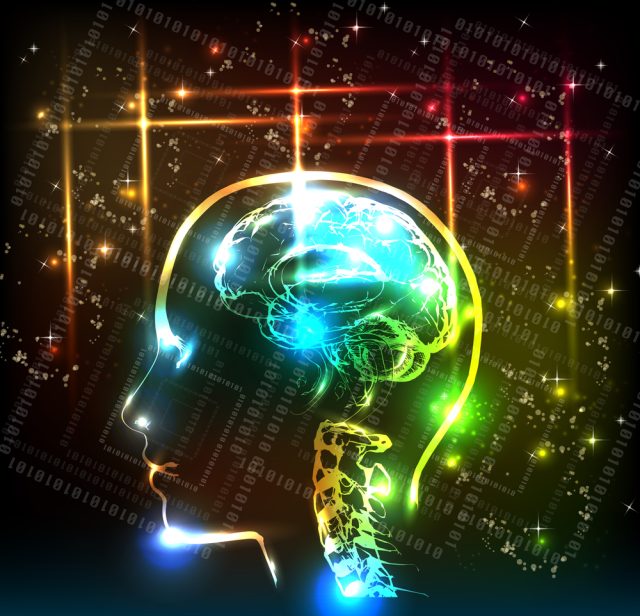By: Dominick L. Flarey, Ph.D, RN-BC, ANP-BC
Certified Bioenergetics Coach
Board Certified Functional Medicine Specialist
President, BioEnergetics Health Consultants, LLC
Bioenergetic Therapy Explained: Principles and Practices
 In the evolving world of therapeutic approaches aimed at fostering personal growth and wellness, bioenergetic therapy stands out as a unique intervention focused on the intricate relationship between bodily energy, emotional health, and psychological wellbeing. This method leverages the principles of energy, grounding, and vibration to explore and enhance the mind-body connection, offering an alternative therapy that delves into the physical manifestations of emotional and psychological distress. As an integrative discipline, bioenergetic therapy provides a holistic framework for understanding how the flow and blockages of life energy within the body can affect an individual’s overall health and capacity for self-expression and healing.
In the evolving world of therapeutic approaches aimed at fostering personal growth and wellness, bioenergetic therapy stands out as a unique intervention focused on the intricate relationship between bodily energy, emotional health, and psychological wellbeing. This method leverages the principles of energy, grounding, and vibration to explore and enhance the mind-body connection, offering an alternative therapy that delves into the physical manifestations of emotional and psychological distress. As an integrative discipline, bioenergetic therapy provides a holistic framework for understanding how the flow and blockages of life energy within the body can affect an individual’s overall health and capacity for self-expression and healing.
This article will navigate through the conceptual underpinnings and practical applications of bioenergetic therapy, from its historical development to the principles that guide its practice. It will discuss the significance of the mind-body connection as foundational to bioenergetic work and explore Core Energetics as a refinement of traditional bioenergetics. Additionally, it will cover various practices and techniques utilized in bioenergetic therapy, highlighting its benefits and the conditions it seeks to address. By offering insight into the holistic and dynamic approach of bioenergetic therapy, the article aims to illuminate how this therapeutic method supports not only physical well-being but also promotes emotional and psychological growth, facilitated by skilled bioenergetic practitioners through breathing, energy work, and grounding techniques.
What is Bioenergetic Therapy?
Bioenergetic Therapy (BA) is a therapeutic approach that integrates the understanding of personality through the body’s energetic processes. Initially developed by Alexander Lowen, M.D., this therapy emphasizes reconnecting individuals with their bodies to fully experience life 1. It is distinct in its focus on essential bodily functions such as breathing, motility, feeling, and expression, examining the physical, emotional, and intellectual restrictions on these functions. BA uniquely combines personality analysis with physical exercises to address and release chronic muscular tension, which is crucial for overcoming life-detracting feelings, behaviors, and attitudes 1.
 The therapy is described as an adventure in self-discovery, differing from other self-exploratory therapies by its emphasis on understanding human personality through bodily expressions. For over fifty years, Bioenergetic Therapy has aided individuals in achieving better health both physically and mentally 1. It operates on the principle that the body’s energetic processes significantly influence both mental and physical states. This integration involves working with the body, the patient’s interpersonal relationships, and mental processes, all interpreted in relation to each other 1.
The therapy is described as an adventure in self-discovery, differing from other self-exploratory therapies by its emphasis on understanding human personality through bodily expressions. For over fifty years, Bioenergetic Therapy has aided individuals in achieving better health both physically and mentally 1. It operates on the principle that the body’s energetic processes significantly influence both mental and physical states. This integration involves working with the body, the patient’s interpersonal relationships, and mental processes, all interpreted in relation to each other 1.
Key to Bioenergetic Therapy is the release of structured chronic muscular tensions that are not self-imposed but develop as survival mechanisms within one’s cultural and home environment. These tensions often suppress body-centered values such as pleasure, compassion, and joy, while promoting ego-centric values like power and prestige 1. The physical exercises in Bioenergetic Therapy focus on aspects like self-perception, self-expression, and self-possession, aligning one’s self-image with the reality of one’s self. Techniques such as body contact, understanding boundaries, grounding, and recognizing muscular tensions serve both diagnostic and therapeutic purposes, addressing somatic and psychological defenses against past traumas 1.
At its core, Bioenergetic Therapy seeks to open individuals’ hearts to life and love, which can be challenging as many individuals “harden” their hearts in response to trauma. The therapy aims to enhance the overall quality of life by promoting the experience of aliveness, pleasure, joy, and love, moving beyond mere symptom relief to achieving vibrant health 1. The foundational principles of grounding, breathing, and vibration are emphasized, with the belief that restricted breathing, movement, and self-expression limit one’s life vitality. Essentially, Bioenergetic Therapy posits that one does not simply ‘have’ a body but rather ‘is’ a body, where full engagement with bodily functions is crucial for overall well-being 1.
History and Development of Bioenergetic Therapy
The origins of Bioenergetic Therapy trace back to the early psychoanalytic work of Sigmund Freud. Wilhelm Reich, an Austrian psychoanalyst and a student of Freud, significantly contributed to the development of theories and techniques involving the body. He immigrated to the United States in 1939 and brought with him a novel approach that emphasized the biological and psychological exploration of libido instincts through his books, including “The Function of the Orgasm” and “Character Analysis” 2.
Reich was innovative in addressing the concept of “resistance” in therapy, focusing on the client’s resistance to awakening the unconscious through psychoanalytic interpretations. He linked muscular relaxation to the softening of body defenses, marking a shift from traditional psychoanalytic methods to more body-focused interventions. Reich’s insights into the role of chronic muscular tension as a form of psychological armoring laid the groundwork for subsequent developments in body psychotherapy 2.
Alexander Lowen, born in 1910, emerged as a pivotal figure in the evolution of Bioenergetic Therapy. After studying with Reich, Lowen began to form his own ideas, eventually parting ways to establish Bioenergetic Analysis in the early 1950s alongside colleagues William Waller and John Pierrakos. This new approach was named after Reich’s discovery of bioenergy, but Lowen adapted and expanded the concepts to include a broader definition of energy that encompassed aliveness and spontaneous self-expression 2.
Lowen’s significant contributions included the development of the concept of Grounding, which involves physical exercises to enhance one’s connection to the ground, supporting the therapeutic process. He also categorized specific character structures linked to developmental traumas and introduced targeted techniques to address these traumas. Moreover, Lowen emphasized the importance of active exercises that promote energy changes, increased respiration, and expressive movements in therapy 2.
Bioenergetic Analysis, as developed and refined by Lowen from the 1950s through the 1980s, represents a comprehensive form of psychotherapy that continues to influence therapeutic practices today. It integrates direct work with the body, a hallmark of Reich’s influence, with Lowen’s innovations in understanding energy and character structures 2. The development of Bioenergetic Therapy illustrates a significant evolution from Freud’s psychoanalytic methods to a complex and nuanced approach that addresses both physical and psychological health through the understanding of body dynamics and energy flow.
Principles of Bioenergetic Therapy
Bioenergetic Therapy is distinguished by its understanding of personality through the body’s energetic processes, emphasizing the integration of the body and mind to enhance life experience to the fullest 1. This therapeutic approach begins with fundamental bodily functions such as breathing, motility, feeling, and expression, and explores restrictions imposed on these functions—whether physical, emotional, or intellectual 1.
Grounding
 Grounding is a core principle in Bioenergetic Therapy, focusing on establishing a connection between the body and the earth. This practice aids individuals in becoming more present and aware, thereby enhancing their emotional and psychological grounding. Specific grounding exercises increase contact with the legs and feet, reducing anxiety and helping individuals to focus less on mental activities and more on bodily sensations 3. Grounding exercises are beneficial for everyone, particularly for addressing issues like anxiety, depression, and trauma recovery. They involve physical movements that help individuals connect deeply with the ground, promoting a sense of safety and stability 3 4.
Grounding is a core principle in Bioenergetic Therapy, focusing on establishing a connection between the body and the earth. This practice aids individuals in becoming more present and aware, thereby enhancing their emotional and psychological grounding. Specific grounding exercises increase contact with the legs and feet, reducing anxiety and helping individuals to focus less on mental activities and more on bodily sensations 3. Grounding exercises are beneficial for everyone, particularly for addressing issues like anxiety, depression, and trauma recovery. They involve physical movements that help individuals connect deeply with the ground, promoting a sense of safety and stability 3 4.
Breathing
Breathing is another fundamental principle of Bioenergetic Therapy. It involves encouraging deeper and more conscious breathing to help release physical and emotional tensions. This principle operates on the premise that enhancing one’s breathing can improve overall vitality and health. Therapists assist clients in becoming aware of their breathing patterns and help them work through any blocks to deep breathing, thereby fostering better emotional and physical health 5 1.
Vibration
The principle of Vibration in Bioenergetic Therapy relates to the ability to feel fully and experience life energy without restrictions. It is believed that increasing one’s vibrational state through specific movements and exercises can improve self-awareness and emotional expression. This principle supports the notion that a higher vibrational state allows individuals to connect more deeply with their true selves and to experience a greater range of emotions and energies 6 4.
Bioenergetic Therapy integrates these principles in its practices, utilizing them to address various physical and psychological issues. By working with the body through grounding, breathing, and vibration, this therapy helps individuals release tension and trauma, thereby promoting a healthier and more fulfilling life 7.
Mind-Body Connection in Bioenergetic Therapy
Bioenergetic therapy, a therapeutic approach developed by Alexander Lowen, emphasizes the profound connection between the mind and the body, asserting that emotional and mental health are directly linked to physical well-being. This therapy understands that chronic muscular tension is often a physical manifestation of psychological stress 8. Central to bioenergetic therapy is the concept that blockages within the body can impede the flow of energy, leading to both emotional and physical distress. The therapy aims to release these blockages, thus enhancing self-expression and overall vitality 8.
 Bioenergetic therapy incorporates various techniques aimed at harmonizing the relationship between the body and the mind. These include bodywork, where physical exercises and bodywork release tension and restore the body’s vibrational state, and breathing techniques, where therapists guide clients in breathing exercises essential to bioenergetic healing. These exercises help relieve physical tension and enhance emotional release 8.
Bioenergetic therapy incorporates various techniques aimed at harmonizing the relationship between the body and the mind. These include bodywork, where physical exercises and bodywork release tension and restore the body’s vibrational state, and breathing techniques, where therapists guide clients in breathing exercises essential to bioenergetic healing. These exercises help relieve physical tension and enhance emotional release 8.
Additionally, psychological exploration plays a crucial role in bioenergetic therapy. Similar to talk therapy, it involves exploring past trauma, relational dynamics, and emotional experiences. However, it uniquely focuses on how these psychological aspects manifest in the body 8. This form of therapy involves various bioenergetic exercises to release tension and restore the body’s natural vibrational state, often including breathing techniques, movement, and bodywork designed to enhance expressiveness and release energy trapped in the body 8.
Bioenergetic therapists work closely with patients to help them understand the connection between their physical state and their emotional well-being, managing symptoms like anxiety, depression, and emotional blockages. Techniques include grounding exercises, which help individuals connect with their physical presence, and stress release exercises that focus on areas of the body where tension is held 8.
The therapeutic relationship between the therapist and the patient is founded on trust and openness, allowing for effective communication and progress. Engaging in bioenergetic psychotherapy can be a transformative experience, offering a unique combination of mental and physical healing, leading to a more balanced and harmonious state of being. After therapy, patients often report feeling more grounded, emotionally resilient, and physically relaxed 8.
Bioenergetic therapy focuses on the body’s energy flow and physical dynamics, addressing stress and tension, while psychotherapy dives into emotional and mental aspects. This synergy allows for a holistic treatment addressing the mind and body 8. Integrating bioenergetic therapy with psychotherapy opens up new possibilities for holistic healing. By addressing both psychological and physical aspects of health, this approach can lead to a deeper, more sustainable recovery, offering hope for those seeking a comprehensive path to wellness 8.
Core Energetics: Refinement of Bioenergetics
Core Energetics (CE) represents a significant evolution in the field of somatic psychology, merging the insights of body psychotherapy with spiritual growth principles. This approach, a refinement and extension of Bioenergetic Therapy, was developed by Dr. John Pierrakos, who integrated his work with Wilhelm Reich and the spiritual teachings from The Pathwork 910.
CE posits that every individual inherently possesses the capacity for limitless love and expression, which often becomes obscured by protective mechanisms formed early in life. The therapy focuses on liberating this core, authentic self, enabling a transformation that allows love to flow freely and nourish all aspects of being 9.
The therapeutic techniques in CE are diverse, involving body-focused, cathartic interventions designed to address energy blocks and deficiencies. These interventions often include physical exercises, breathing techniques, and the use of specific equipment like rollers for direct body work. Such tools help in smoothing out muscles and releasing tension in areas prone to blockages such as the eyes, jaw, and diaphragm 9.
A unique aspect of CE is its use of staccato breathing, a technique inspired by the natural breathing patterns observed in nursing infants. This method consists of three stages: expansion, contraction, and relaxation, aimed at optimizing energy flow and balancing emotional states. By engaging in this breathing technique, individuals can reconnect with a primal sense of connection and love, facilitating deep psychological and emotional healing 9.
Core Energetics also emphasizes the importance of touch and massage, both self-administered and by therapists, to work intensively with the body’s energy. This approach not only aids in clearing blocked energy but also enhances the individual’s ability to ground themselves, increasing their presence and awareness in the moment 9.
The philosophical underpinnings of CE are deeply influenced by the belief that an individual’s emotional history, both past and present, is stored within the body as ‘body memories’. These memories can create energy blockages that manifest as physical symptoms or emotional disturbances. CE aims to release these blockages, thereby facilitating a journey of personal transformation and wholeness that aligns body, mind, and spirit 10.
By addressing the body directly and integrating spiritual insights, Core Energetics offers a holistic path to healing that transcends conventional psychotherapeutic approaches. It not only seeks to alleviate symptoms but also to empower individuals to realize their full potential, leading to a more dynamic, joyous, and fulfilling life 1110.
Practices and Techniques in Bioenergetic Therapy
Bioenergetic therapy integrates various practices and techniques to address both physical and psychological aspects of health. This approach uses body movements, breathwork, and energy shifting to help individuals release tension and enhance well-being.
Body Movements
 Bioenergetic therapy emphasizes the importance of body movements to facilitate emotional and physical release. Techniques such as standing and bending the knees are directed to heighten connection to the ground, helping individuals to feel more grounded and stable 12. Additionally, using tools like exercise balls or bioenergetic stools can aid in releasing tension in the back and opening the breathing passages, which are crucial for deep emotional expressions such as crying or expressing longing 12. Movement techniques, such as kicking a mattress or other forms of expressive movement, are employed to release tension stored in the body, particularly in areas where chronic muscular tension is held 13.
Bioenergetic therapy emphasizes the importance of body movements to facilitate emotional and physical release. Techniques such as standing and bending the knees are directed to heighten connection to the ground, helping individuals to feel more grounded and stable 12. Additionally, using tools like exercise balls or bioenergetic stools can aid in releasing tension in the back and opening the breathing passages, which are crucial for deep emotional expressions such as crying or expressing longing 12. Movement techniques, such as kicking a mattress or other forms of expressive movement, are employed to release tension stored in the body, particularly in areas where chronic muscular tension is held 13.
Breathwork
Breathwork in bioenergetic therapy involves fast, deep, and regular breathing patterns that do not pause at the top or bottom of the breath cycle. This type of breathing is assertive and aims to be cathartic, inducing heightened and altered states of awareness and sensation 14. The therapy encourages individuals to engage in vigorous breathing exercises that can last from five to ten minutes, facilitating emotional release and physical relaxation. Techniques such as bioenergetic breathing help individuals connect with different parts of their body, enhancing breath, circulation, and expressiveness 146.
Energy Shifting
The practice of energy shifting in bioenergetic therapy focuses on grounding, shifting, or clearing stagnant energy within the body. This is achieved through various exercises that involve stretching, vibration, and breathing to help individuals feel more connected and aligned with their energetic states 6. Grounding exercises are particularly emphasized, where individuals are encouraged to attune to the flow of energy from their body to the ground, which can be achieved in different positions such as standing, sitting, or laying down 13. These practices aim to integrate the body, emotions, mind, intent, and spirituality to activate greater consciousness and facilitate healing 6.
Bioenergetic therapy’s comprehensive approach through these practices supports individuals in overcoming emotional blockages and physical tensions, fostering a deeper connection with their bodies and enhancing overall quality of life.
Benefits of Bioenergetic Therapy
Bioenergetic therapy, with its roots in somatic psychotherapy, provides a comprehensive approach to mental health by focusing on the mind-body connection. This therapeutic method helps individuals explore their emotions, thoughts, and physical sensations, fostering holistic healing 15. By addressing mental health challenges through bioenergetic analysis, individuals can experience profound benefits in various aspects of their lives.
 One of the key advantages of bioenergetic therapy is its effectiveness in promoting mental health. It empowers individuals to strengthen their emotional boundaries and enhance their relationships. This is achieved through training that develops a deeper understanding of how emotions manifest in the body, thus allowing for more authentic interactions and connections with others 15.
One of the key advantages of bioenergetic therapy is its effectiveness in promoting mental health. It empowers individuals to strengthen their emotional boundaries and enhance their relationships. This is achieved through training that develops a deeper understanding of how emotions manifest in the body, thus allowing for more authentic interactions and connections with others 15.
Bioenergetic analysis is particularly beneficial in the treatment of trauma. Traumatic experiences, often stored in the body, can be released and processed in a safe environment facilitated by bioenergetic techniques. These techniques help individuals to tune into their body’s wisdom, recognizing and addressing physical sensations and tension patterns that are linked to past traumas 15.
Moreover, the therapy emphasizes the importance of healthy boundaries in relationships. Through various exercises, individuals learn to establish clear physical and emotional boundaries, which is crucial for maintaining healthy interpersonal relationships and personal well-being 15.
Bioenergetic therapy also offers benefits for individuals suffering from a range of psychological issues connected to the body, such as anxiety, depression, obsessive-compulsive disorder (OCD), panic disorders, and phobias. The therapy aims to relieve chronic stress and tension, which are often at the core of these conditions, thereby improving both physical and mental health 16.
Additionally, research supports the efficacy of bioenergetic therapy, particularly in the treatment of chronic depression. A study in 2013 demonstrated that body-oriented psychotherapy, which includes movement and grounding techniques integral to bioenergetic therapy, significantly reduced depressive symptoms and offered an effective treatment option for individuals with chronic depression 16.
For those dealing with post-traumatic stress disorder (PTSD), bioenergetic therapy provides a valuable therapeutic approach. It helps in alleviating long-held stress and trauma that cause chronic muscular tension, thereby enhancing life enjoyment and overall well-being 16.
Overall, bioenergetic therapy not only addresses specific psychological and physical issues but also promotes personal growth and authentic living. By encouraging individuals to be true to themselves and to embrace their unique qualities, bioenergetic therapy facilitates a journey towards a more fulfilled and balanced life 15.
Conditions Treated by Bioenergetic Therapy
Bioenergetic therapy, a holistic approach rooted in the understanding of the body’s energy dynamics, has shown efficacy in treating a variety of conditions that stem from both psychological and physical origins. This therapy integrates somatic work with psychodynamic psychotherapy, providing a comprehensive treatment that extends beyond symptom management to enhance overall well-being.
Trauma
Trauma, particularly from childhood, can manifest in the body’s musculature and fascia, developing chronic tensions that restrict emotion and expression. These physical manifestations often underlie various psychological issues such as PTSD, depression, anxiety, and even addictions 12. Bioenergetic therapy addresses these issues by combining physical movement with the exploration of past traumas, helping individuals release these tensions and recover their capacity for aliveness 12. This method is particularly beneficial for those whose trauma has created a long-standing fear for survival, requiring a therapeutic approach that fosters deep, transformational change through repeated physical and emotional engagement 12.
Grief and Loss
Grief and loss can trigger profound emotional disturbances that affect both mind and body. Bioenergetic therapy aids in processing these emotions by identifying their impact on the body and facilitating a reconnection with the self. This approach helps individuals navigate their grief, thereby clarifying self-worth and values, which are often obscured during periods of intense mourning 6.
Chronic Pain
Chronic pain is frequently a physical manifestation of stress and unresolved emotional issues. Bioenergetic therapy explores the root causes of this pain, focusing on the body’s response to environmental stressors and negative experiences. By understanding and addressing the body’s communication through its reactions, this therapy helps alleviate pain and prevent its recurrence, offering a significant improvement in quality of life 17.
Depression and Anxiety
Bioenergetic therapy is particularly effective in treating depression and anxiety, which are often linked to traumatic experiences and hostile environments experienced during childhood. By exploring past and present experiences and their impact on an individual’s current state, bioenergetic therapists help unpack the trauma and initiate a healing process that integrates mind, body, and spirit 6.
The integration of bioenergetic therapy into a treatment plan provides a unique opportunity to address the interconnectedness of emotional and physical health, promoting recovery and resilience in individuals facing these challenging conditions. Through its focus on energy, movement, and emotional exploration, bioenergetic therapy offers a path to restoring health and enhancing life vitality.
Conclusion
 Throughout this exploration of bioenergetic therapy, we have delved into its roots, principles, and the diverse techniques that define this unique therapeutic approach. The therapy’s emphasis on the interconnectedness of physical health, emotional well-being, and psychological insight underlines its capacity to address a wide range of conditions—from trauma and chronic pain to more profound issues like anxiety and depression. By fostering an intimate understanding of the body’s language through movement, breath, and energy flow, bioenergetic therapy illuminates a path toward healing and self-discovery, grounded in the belief that the body holds key insights into our deepest selves.
Throughout this exploration of bioenergetic therapy, we have delved into its roots, principles, and the diverse techniques that define this unique therapeutic approach. The therapy’s emphasis on the interconnectedness of physical health, emotional well-being, and psychological insight underlines its capacity to address a wide range of conditions—from trauma and chronic pain to more profound issues like anxiety and depression. By fostering an intimate understanding of the body’s language through movement, breath, and energy flow, bioenergetic therapy illuminates a path toward healing and self-discovery, grounded in the belief that the body holds key insights into our deepest selves.
The significance of bioenergetic therapy extends beyond mere symptom relief, offering a holistic framework that encourages individuals to embrace their full potential for joy, love, and vibrant health. As we recognize the intricate dance between our physical state and emotional landscape, this therapy stands as a testament to the power of integrating body and mind in the healing journey. Emphasizing the importance of addressing both psychological and somatic barriers to wellness, bioenergetic therapy offers a compelling avenue for those seeking to reclaim a sense of aliveness and authenticity in their lives.
FAQs
1. What are the fundamental concepts behind energy and bioenergetics?
Bioenergetics is the study of how energy is transferred within living organisms. It is governed by two main laws: firstly, energy cannot be created or destroyed but only transformed from one form to another; secondly, energy transfer tends to increase entropy and involves the release of “free energy”.
2. How does the bioenergetic theory relate to health?
The bioenergetic theory suggests that chronic physical tension and rigidity are reflective of psychological constraints. It focuses on the body’s basic functions such as breathing, movement, feeling, self-expression, and sexuality, positing that these aspects are interconnected with mental health.
3. What is the goal of bioenergetic exercises?
Bioenergetic exercises aim to restore freedom of movement, energy, and emotional expression. They are designed to enhance the flow and freedom in body parts that are crucial for self-expression.
4. What are the key concepts proposed by Alexander Lowen?
Alexander Lowen emphasized the interconnection between the mind and body. He believed that psychological issues could be addressed by engaging in specific physical movements that help restore energy flow, proper bodily function, and correct posture.
References
[1] – https://www.lowenfoundation.org/what-is-bioenergetics[2] – https://traumahealing.org/wp-content/uploads/2023/03/0743-4804-2023-33-11.pdf
[3] – https://laurieure.com/grounding-a-foundation-of-bioenergetic-therapy/
[4] – https://innercamp.com/what-is-bioenergetics-the-work-of-alexander-lowen/
[5] – https://drcharlesmartin.com/the-role-of-the-body-in-bioenergetic-psychotherapy/
[6] – https://www.energeticsinstitute.com.au/bioenergetics/
[7] – https://www.verywellmind.com/what-is-bioenergetic-therapy-5211139
[8] – https://bioresonancetherapy.com/articles/pathways-to-healing-with-bioenergetic-therapy-and-psychotherapy/
[9] – https://www.goodtherapy.org/blog/core-energetics/
[10] – https://coreenergeticspolska.com/frequently-asked-questions/
[11] – https://www.coreenergetics.org/who-we-are/
[12] – https://therapywisdom.com/2023/12/04/bioenergetic-psychotherapy-techniques-trauma/
[13] – https://www.goodtherapy.org/learn-about-therapy/types/bioenergetic-analysis
[14] – https://www.painscience.com/articles/breathing.php
[15] – https://therapywisdom.com/2023/05/22/benefits-bioenergetic-analysis-training/
[16] – https://www.verywellhealth.com/bioenergetics-7557812
[17] – https://www.painreliefsg.com/what-we-do/therapy/bio-frequency-therapy

